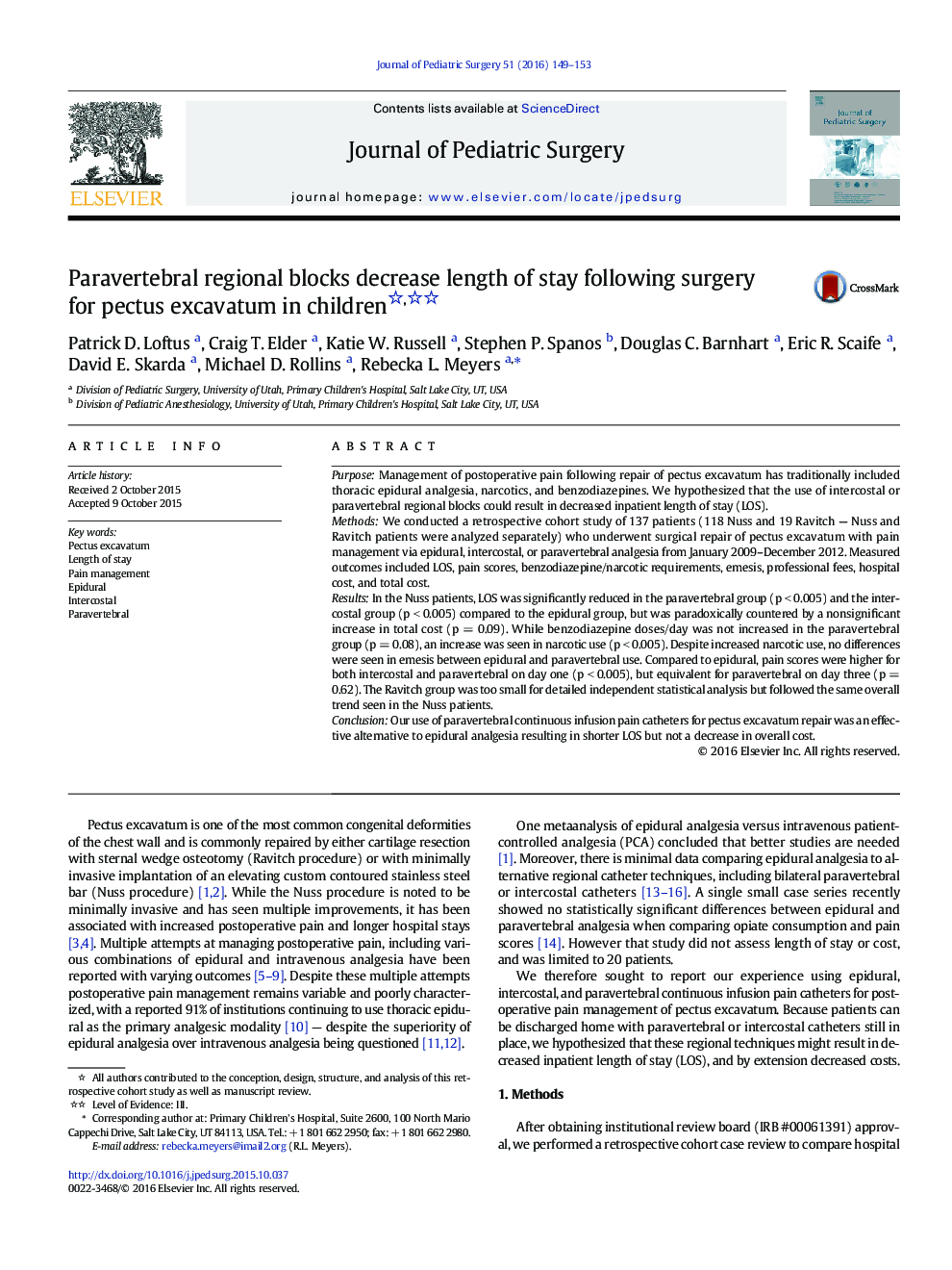| Article ID | Journal | Published Year | Pages | File Type |
|---|---|---|---|---|
| 4154883 | Journal of Pediatric Surgery | 2016 | 5 Pages |
PurposeManagement of postoperative pain following repair of pectus excavatum has traditionally included thoracic epidural analgesia, narcotics, and benzodiazepines. We hypothesized that the use of intercostal or paravertebral regional blocks could result in decreased inpatient length of stay (LOS).MethodsWe conducted a retrospective cohort study of 137 patients (118 Nuss and 19 Ravitch — Nuss and Ravitch patients were analyzed separately) who underwent surgical repair of pectus excavatum with pain management via epidural, intercostal, or paravertebral analgesia from January 2009–December 2012. Measured outcomes included LOS, pain scores, benzodiazepine/narcotic requirements, emesis, professional fees, hospital cost, and total cost.ResultsIn the Nuss patients, LOS was significantly reduced in the paravertebral group (p < 0.005) and the intercostal group (p < 0.005) compared to the epidural group, but was paradoxically countered by a nonsignificant increase in total cost (p = 0.09). While benzodiazepine doses/day was not increased in the paravertebral group (p = 0.08), an increase was seen in narcotic use (p < 0.005). Despite increased narcotic use, no differences were seen in emesis between epidural and paravertebral use. Compared to epidural, pain scores were higher for both intercostal and paravertebral on day one (p < 0.005), but equivalent for paravertebral on day three (p = 0.62). The Ravitch group was too small for detailed independent statistical analysis but followed the same overall trend seen in the Nuss patients.ConclusionOur use of paravertebral continuous infusion pain catheters for pectus excavatum repair was an effective alternative to epidural analgesia resulting in shorter LOS but not a decrease in overall cost.
